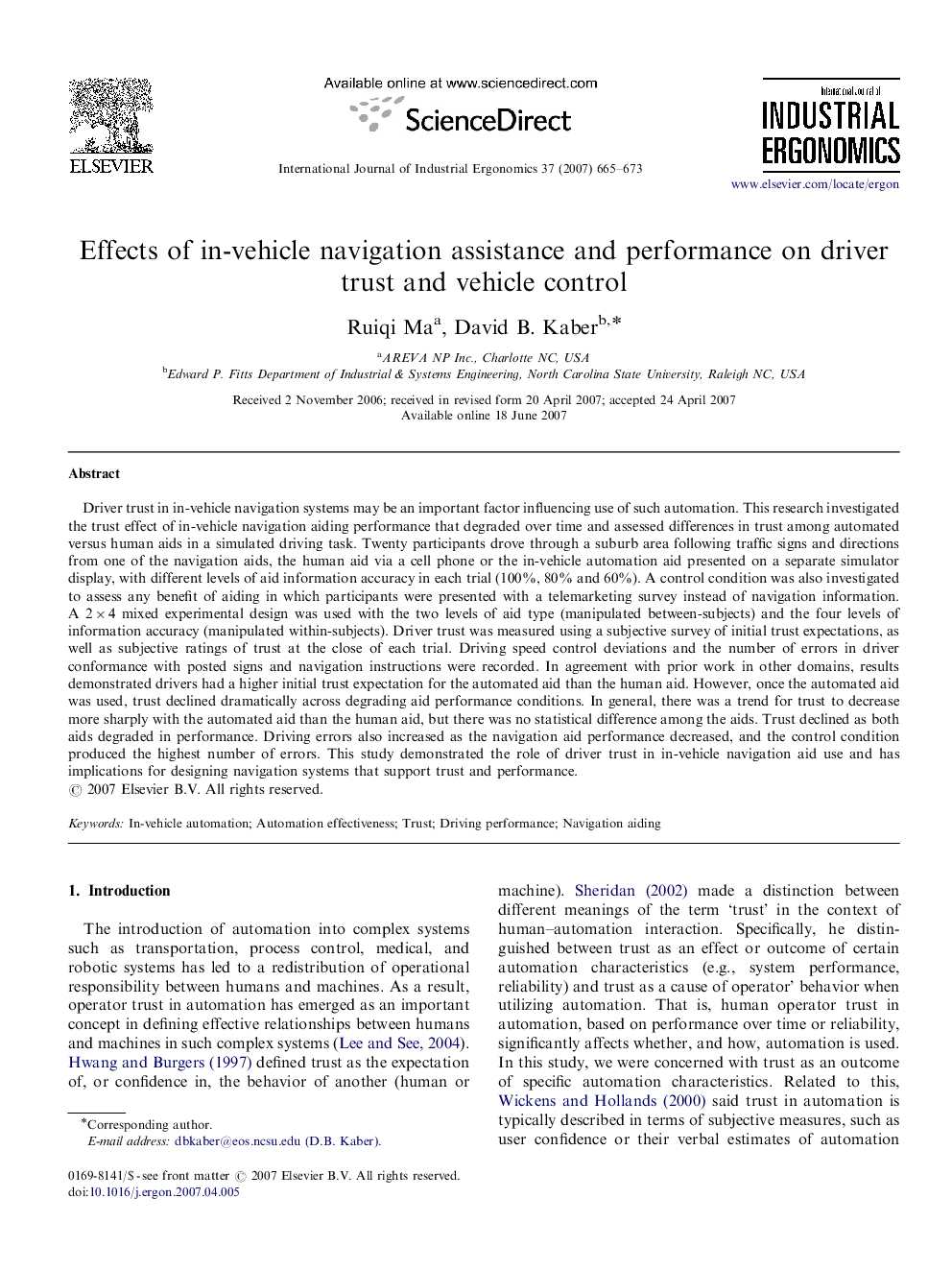| کد مقاله | کد نشریه | سال انتشار | مقاله انگلیسی | نسخه تمام متن |
|---|---|---|---|---|
| 1096714 | 1487476 | 2007 | 9 صفحه PDF | دانلود رایگان |

Driver trust in in-vehicle navigation systems may be an important factor influencing use of such automation. This research investigated the trust effect of in-vehicle navigation aiding performance that degraded over time and assessed differences in trust among automated versus human aids in a simulated driving task. Twenty participants drove through a suburb area following traffic signs and directions from one of the navigation aids, the human aid via a cell phone or the in-vehicle automation aid presented on a separate simulator display, with different levels of aid information accuracy in each trial (100%, 80% and 60%). A control condition was also investigated to assess any benefit of aiding in which participants were presented with a telemarketing survey instead of navigation information. A 2×4 mixed experimental design was used with the two levels of aid type (manipulated between-subjects) and the four levels of information accuracy (manipulated within-subjects). Driver trust was measured using a subjective survey of initial trust expectations, as well as subjective ratings of trust at the close of each trial. Driving speed control deviations and the number of errors in driver conformance with posted signs and navigation instructions were recorded. In agreement with prior work in other domains, results demonstrated drivers had a higher initial trust expectation for the automated aid than the human aid. However, once the automated aid was used, trust declined dramatically across degrading aid performance conditions. In general, there was a trend for trust to decrease more sharply with the automated aid than the human aid, but there was no statistical difference among the aids. Trust declined as both aids degraded in performance. Driving errors also increased as the navigation aid performance decreased, and the control condition produced the highest number of errors. This study demonstrated the role of driver trust in in-vehicle navigation aid use and has implications for designing navigation systems that support trust and performance.
Journal: International Journal of Industrial Ergonomics - Volume 37, Issue 8, August 2007, Pages 665–673